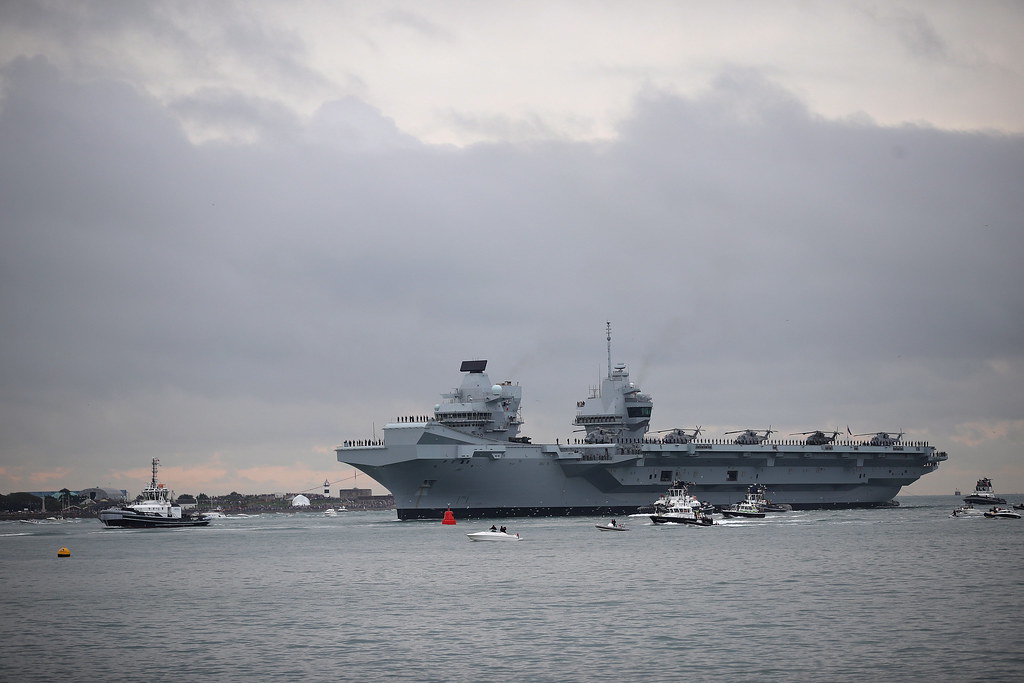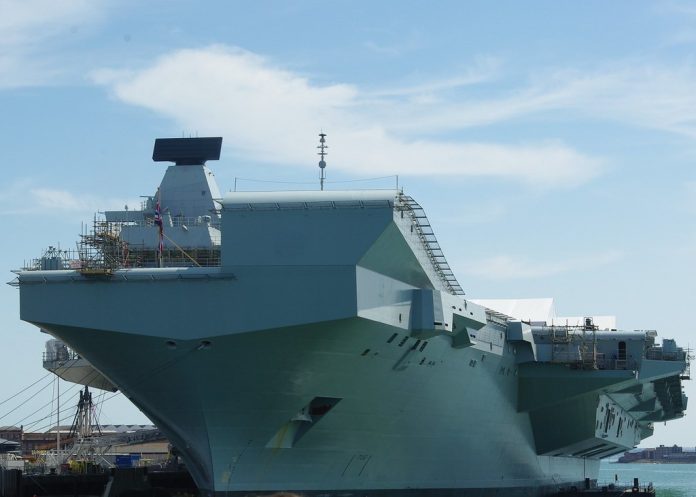
The Royal Navy’s Queen Elizabeth-class aircraft carriers, HMS Queen Elizabeth and HMS Prince of Wales, are facing a daunting series of setbacks, including mechanical failures and operational limitations, casting a shadow over the UK’s naval power.

Earlier this year, the HMS Queen Elizabeth experienced a minor fire while docked in Scotland, fortunately resulting in minimal damage with no injuries reported.

This incident is just one of the many challenges these ships face, emphasizing the questions surrounding their defense capabilities and operational independence.

“The Queen Elizabeth Class Aircraft Carriers (QEC) were built to allow for capability changes over the lifetime of these ships,” stated James Cartlidge, the Minister of State for Defence, in a report from UK Defence Journal.

Despite this reassurance and the fact that these carriers cost over £7 billion combined, many are skeptical about the Royal Navy’s ability to operate and defend them without external help.

The HMS Prince of Wales has had a particularly tumultuous journey, plagued with leaks in the engine room and mechanical breakdowns since its commissioning in 2019. It has been docked almost as long as it has been at sea.

Tom Sharpe of the UK’s Telegraph newspaper paints a grim picture of the current state of the Royal Navy’s carriers, noting that even with a full complement of UK jets, they would still fall short of the capabilities of a US Carrier Strike Group. There are “gaping holes” in early warning systems, air-to-air refueling, and solid stores support.

Adding to the carriers’ woes, a spokesperson for the Royal Navy admitted, “A minor, isolated fire on HMS Queen Elizabeth was quickly brought under control and extinguished,” after the recent fire incident. The news underscores the ongoing struggle to keep the ships operational.

Nevertheless, efforts to maintain a formidable naval presence continue. HMS Queen Elizabeth is slated to lead a carrier strike group consisting of eight vessels, including four British ships, supported by US, Spanish, and Danish vessels.

These ships will take part in Exercise Steadfast Defender off Norway’s Arctic coast, reaffirming the UK’s commitment to NATO and its ability to operate in challenging environments.

Despite these efforts, the reality remains that the Royal Navy struggles with logistical support. The UK’s senior service has only one solid stores ship, RFA Fort Victoria, scheduled for retirement in 2028, further complicating the carriers’ future operations.

In the broader context of global naval power, the U.S. Navy aims to grow to a 500-ship naval force, including both manned and unmanned vessels, maintaining a qualitative superiority over near-peer adversaries.

The Royal Navy, however, once a dominant force at sea, now possesses a comparatively meager fleet and faces challenges that question its readiness for near-peer conflict.

As the UK’s military readiness faces scrutiny, with concerns over stockpile shortages and recruitment crises, the carriers’ issues represent a microcosm of a larger problem.With London’s coffers unlikely to fill soon, and upgrades being a distant prospect, it seems the nightmare for the Royal Navy’s flattops is far from over.

The Royal Navy once dominated the seas, but now struggles to keep its carriers fully operational. This may be why certain British government officials are considering selling one of the carriers to minimize losses. The real question is: who would be willing to purchase it?
Relevant articles:
– The Royal Navy’s Aircraft Carrier Nightmare Is Getting Worse, The National Interest
– The Royal Navy’s Aircraft Carrier Nightmare Just Won’t End, The National Interest
– The Royal Navy is going through difficult times, Sandboxx
– Royal Navy aircraft carrier to set sail for largest Nato exercise since Cold War, Yahoo News UK

